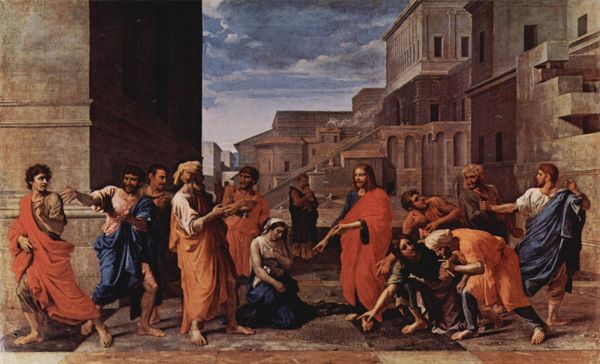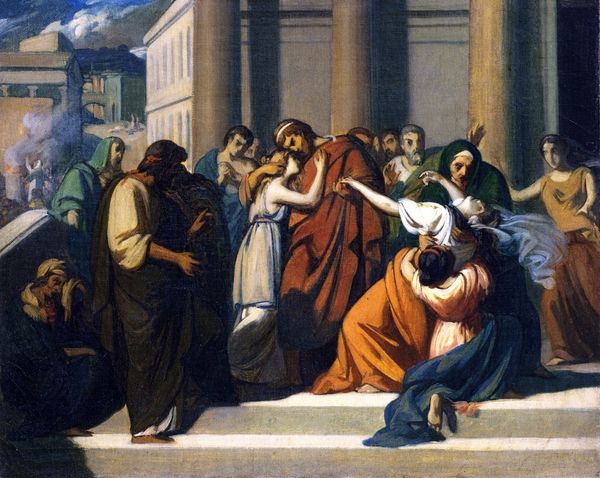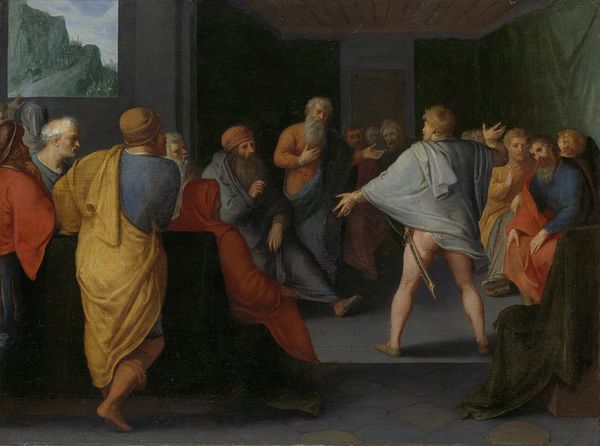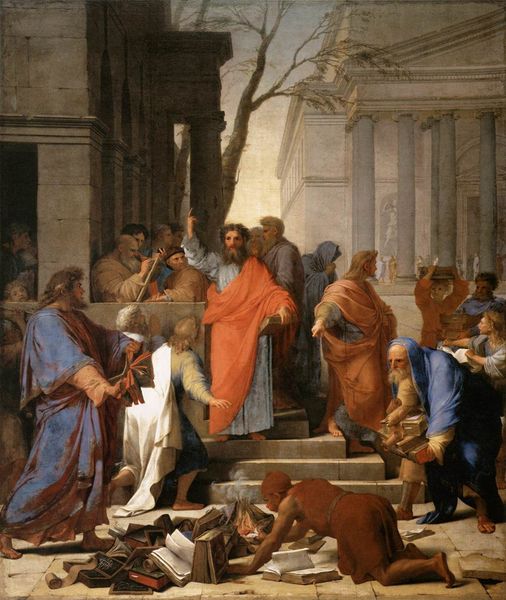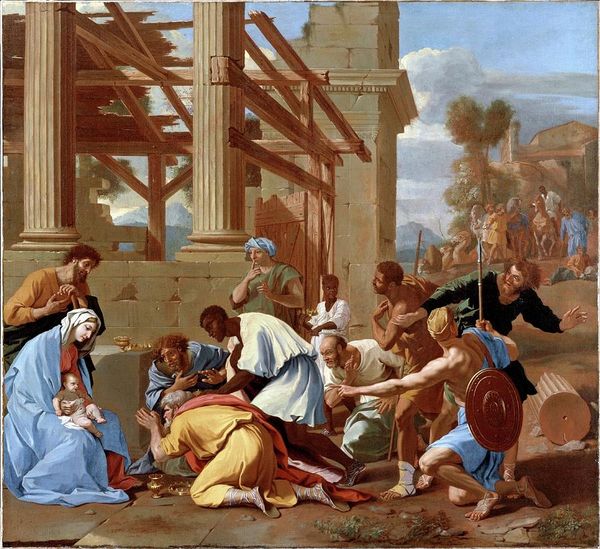
painting, oil-paint
#
narrative-art
#
baroque
#
painting
#
oil-paint
#
painted
#
figuration
#
oil painting
#
roman-mythology
#
mythology
#
history-painting
Dimensions: 122 x 199 cm
Copyright: Public domain
Editor: We’re looking at Nicolas Poussin’s oil painting "The Death of Saphire" from 1656, currently held at the Louvre. The architecture is fascinating and sets the scene, but the people dominate the foreground with intense emotional expressions. What strikes you about its composition and use of form? Curator: Poussin’s geometrical structure is paramount here. Observe how the receding planes of the architecture create a sense of depth, framing the dramatic figures. Note also, how he controls the use of light and shadow; he utilizes contrast to highlight key areas like Saphire’s pale face and the gestures of the figures witnessing her demise. Have you considered how his carefully organized spatial arrangement emphasizes the moral gravity of the scene? Editor: I see that. The sharp contrast between the foreground and background definitely adds drama. It almost feels like the background figures are less involved somehow, while the scene explodes at the front. Is that intentional, to emphasize the characters who directly interacted with her? Curator: It is indeed intentional. Poussin deliberately manipulates our focus through compositional structure. Furthermore, by structuring the subjects into groups and using similar robes that come together as shapes instead of outfits. Notice the balance between dynamic action and the stoic poses of the observers, reflecting a tension between the temporal and the eternal. This allows Poussin to direct our attention as viewers through this organized space, in which we may consider her plight. Editor: That makes the theatrical elements really stand out! It feels like a very calculated drama is at play. It has an organized view which also tells us of Saphire’s standing in the story itself, too. Thank you! Curator: Yes, I think focusing on this highlights Poussin’s structural strategies, and reminds us that it’s a painting deeply invested in rational design and calculated affect. It will offer fruitful insight when contemplating other works.
Comments
No comments
Be the first to comment and join the conversation on the ultimate creative platform.
